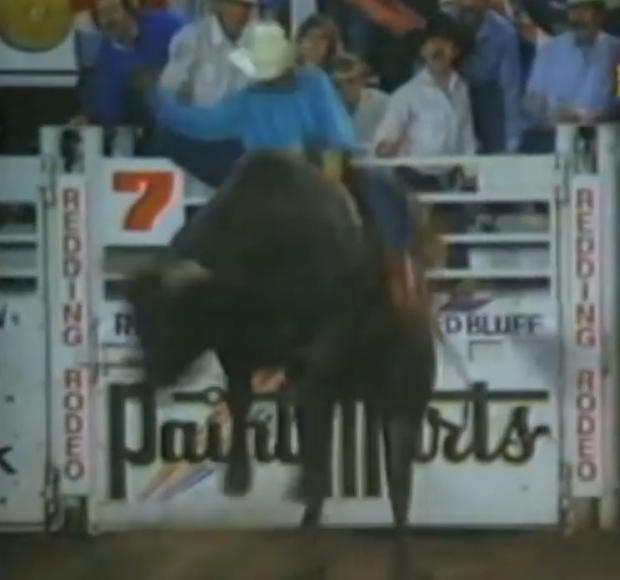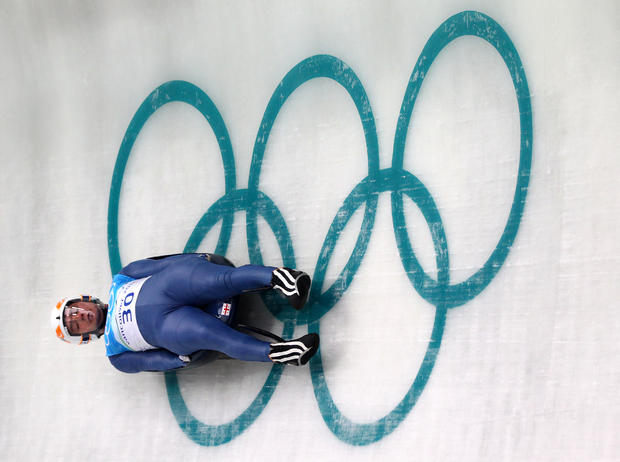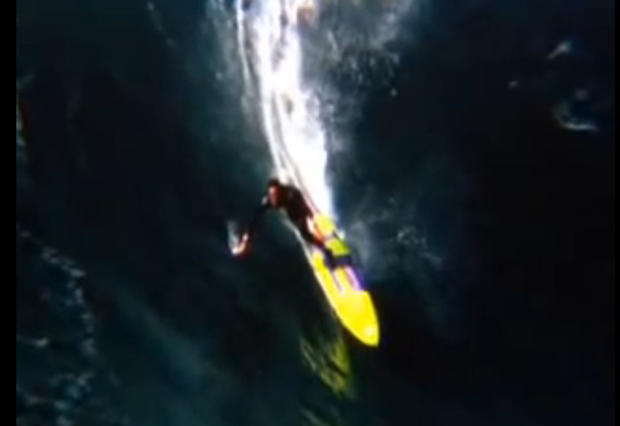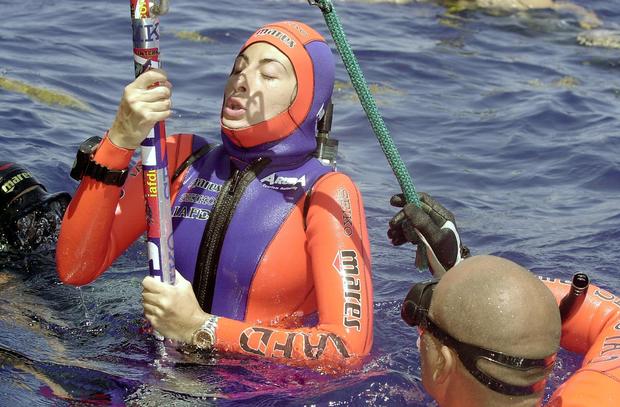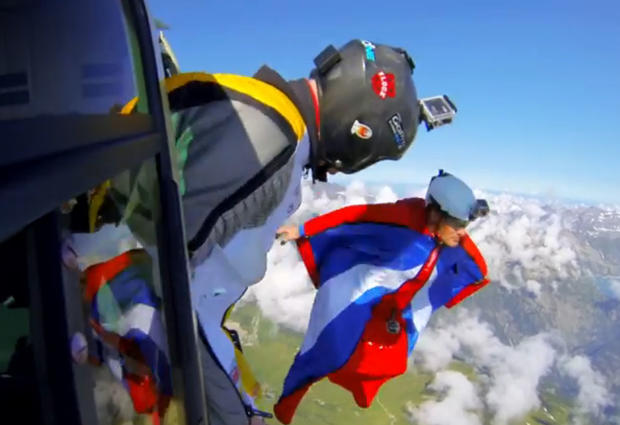Worst Tragedies In Adventure Sports
The greatest level of achievement or accomplishment in the world of sports is a spectacle indeed. We see professional athletes accomplish great feats on the field or on the court, and witness in awe as we realize we are looking at a physical representation of what is possible as the result of dedication, preparation, perseverance, strength and sacrifice. This sacrifice makes its presence felt in all forms of sport, and, as extreme athletes expand the boundaries beyond conventional competition and bring that sense of intensity into the world of nature, the level of that sacrifice, too, may be intensified.
We take a look at some of the worst tragedies in adventure sports.
Lane Frost, Cheyenne Frontier Days Rodeo — July, 1989
The challenge of bull riding can only be described as a combination of some the most intense and dangerous physical and mental demands in the world. To mount any animal, particularly an angry animal, knowing that it weights upwards of 2,300 pounds and is trying to buck you off would put even most of today's professional athletes in a state of panic. Frost had been riding cows since the age of 6 and spent the next 19 years competing in the rodeo. In 1987, he became a PRCA World Champion at the young age of 24 and competed in the 1988 Winter Olympics in the first ever Olympic exhibition rodeo. The following year, on July 30, 1989, Frost was riding a bull named Takin' Care of Business in the Cheyenne Frontier Days Rodeo in Cheyenne, Wyo. After a successful, 91-point ride, Frost dismounted, at which point the Brahma bull turned and hit him with his horn, right in the rider's side. The impact broke a number of Frost's ribs. As he attempted to run, he fell, at which point his heart and lungs were punctured by his broken ribs. He was pronounced dead at a hospital at the age of 25.
Nodar Kumaritashvili, 2010 Winter Olympics (Luge) — February, 2010
Television really does the luge racing event no justice. It may be difficult to tell when watching over a screen, but lugers can reach speeds of 90 mph or more on Olympic tracks. The luge ran through this Georgian athlete's blood. Not only was his father a Youth Champion luger in the Soviet Union, but he was the cousin of the head of the Georgian Luge Federation. He was even related to the man credited as having founded organized sledding sports in the country of Georgia. On Feb. 12, 2010, Nodar, making his Olympic debut in the 2010 Winter Olympics, was involved in a fatal accident when he crashed during his final training run at the Whistler Sliding Centre. On the final turn of the run, Nodar lost control and was tossed off his luge at tremendous speed (reported at 89.2 mph) and into a steel pole. He was airlifted to a hospital but was pronounced dead at the age of 21.
Mark Foo, Mavericks — December, 1994
Half Moon Bay, Calif., a small coastal town some 30 miles south of San Francisco, previously known for its annual pumpkin festival, became popular in the early 1990s upon the discovery of the largest big-wave surf break in the mainland United States — Mavericks. At that time, Mavericks was still surfed by a relatively small group of surfers. It was monumental, therefore on Dec. 23, 1994, when well-known and respected Hawaiian big-wave surfers made the trip to surf there. Among these big-wave riders was well-respected champion surfer Mark Foo. Foo had made a name for himself by taking on the large break of North Shore off Oahu. His first visit to Mavericks would prove to be his final moments. Foo, who was tired from an overnight flight to catch the big break on time, had a late takeoff on a roughly 20-foot wave. The front of his board caught, and Foo wiped out near the trough of the wave. In the event, which was caught on camera, it was believed that Foo's surf leash had snagged on one of the many rocks off the shore and that he had possibly had the wind knocked out of him. Fellow surfer Mike Parsons wiped out on the following wave and reported that he had felt another body, which may have been Foo. His body was found in Pillar Point lagoon about two hours after the wipeout. Some 700 mourners attended his funeral in Hawaii to celebrate one of the greatest big-wave surfers of all time, who died at Mavericks at the age of 36.
Caleb Moore, 2013 Winter X-Games — January, 2013
Snowmobile freestyle is a particularly difficult challenge to master, which makes Moore, who earned a bronze medal in the sport after just a month of practicing, one of the best. Having to tame a 500-pound vehicle in midair, while having to move as light and freely as possible, puts one in an incredibly vulnerable position. In addition to having to make sure the vehicle lands correctly after a jump, you, likewise, have to land correctly on the vehicle. The slightest shift in weight can spell disaster. This risk is increased greatly when trying to execute a backward flip off a ramp. This was the move Caleb Moore was attempting to execute. At the 2013 Winter X-Games in Aspen, Colorado, on a snowmobile freestyle finals run, Moore had performed, and landed several tricks to perfection. Late in the run, Moore attempted a backflip. When the vehicle was slow to complete its rotation, its skis snagged into the ground before he could land, propelling him over the handle bars and into the ground in front of the snowmobile. After hitting the ground, his snowmobile rolled on top of him. A diagnosed heart contusion led to complications, and Moore died on Jan. 31, 2013, at the age of 25.
Shannon Christy, Great Falls Race — July, 2013
The dangers of extreme kayaking are known and respected by any who take to the river for sport. With intense currents, steep drops and underwater rocks, some frequented rivers are difficult to navigate on low-class rapids, let alone some of the more advanced Class-V runs along the Potomac. Shannon Christy had spent the majority of her adult life traveling the country, kayaking and conquering some of the most notorious waters known to adventurous spirits. In the summer of 2013, Christy traveled from South Carolina to take part in the Great Falls Race, part of the Potomac River Festival and a run for advanced kayakers. The run, according to a number of kayakers, is the steepest in the world, with a drop of 60 feet over 60 seconds. When Christy took to the water for a practice run, events transpired that resulted in her outside of her boat, attempting to swim while still in all her kayaking gear. The strong currents, however, pulled her into one of the five 'fingers', known as the "Subway", which flows through the center of the falls. After the falls, she was pinned underwater, and ultimately drowned. Shannon Christy died at the age of 23.
Audrey Mestre, Bayahibe Beach — October, 2002
Freediving is a sport in which the limits are constantly being pushed in order to achieve new depths. The ability to hold one's breath, and sustain the building pressures of increased depth in the water, comes only from years of intensive exercise to control breathing. Audrey Mestre was no stranger to breaking records. In 1999, she broke the female world record when she dived to a depth of 410 feet on a single breath, off the coast of Florida. One year later, she broke the record again, when she reached 427 feet. In October of 2002, Mestre performed a practice dive off Bayahibe Beach, Dominican Republic, to an unprecedented depth of 545 feet. On October 12, she attempted to push that limit once again, hoping to reach a depth of 171 meters. During this dive, an issue arose with her lift-balloon as she attempted to ascend to the surface. This resulted in her being under the water for over eight and a half minutes. She was brought to the surface by her husband, free diver Francisco Ferreras, unconscious. She was taken to the hospital, where she was pronounced dead, at the age of 28.
Mark Sutton, Helibase 74 — August, 2013
Wingsuit flying has been growing in popularity since the modern wingsuit was developed in the 1990s. Sometimes called "squirrel suits", this suit features fabric in areas between the legs and under the arms, allowing the flyer to 'glyde', after jumping out of an aircraft. Mark Sutton made a name for himself, and accomplished international notability when he served as a stunt double of James Bond, parachuting into a stadium during the opening ceremony of the 2012 Summer Olympics in London. Taking part in Helibase 74, an event near the French Les Grandes Otanes, Sutton jumped in a warm-up flight from 10,800 feet. It was suggested that, while Sutton was equipped with a parachute, it either failed or was not used. During his flight, Sutton shifted to his left sharply, and, traveling at speeds of up to 155 mph, he crashed into the mountainside. He was later located at the scene, and was pronounced dead at the age of 42.
Lanami Godinez-Avila, Fraser Valley — April, 2012
While most of the tragedies in this list refer to seasoned athletes, the risk is present in first-timers as well, with or without the presence and guidance of a professional. The risk of suspending yourself from a hang glider hundreds of feet or more above the ground, may indeed increase when you put yourself completely in the trust of someone who has been there before. Lenami Godinez-Avila was celebrating her anniversary with her boyfriend, who had bought her hang gliding lessons for the occasion. Lanami was paired with pilot William Jonathan Orders. As soon as the tandem took flight, onlookers knew something was wrong. 30 seconds after flight, Lanami fell 1,000 feet to her death, as her boyfriend looked on helplessly. It turns out Orders was distracted during preparation, and failed to strap his passenger in properly. Orders later admitted to swallowing a video camera's memory card, to avoid having it used as evidence against him. He eventually admitted to doing this, and pleaded guilty in charges related to the young woman's death. Lanami Godinez-Avila had attempted to hold on the veteran instructor prior to her fall, but was unable to hang on, and died at the age of 27.
Rob Hall, Mt. Everest South Summit — May, 1996
The highest point on Earth is one of the most pursued challenges on the planet, but also requires the most preparation. Due to factors such as temperature, lack of oxygen, cliffs, and unpredictability, final pushes to reach the summit generally happen with multiple groups in pursuit all at once. The size of these groups, combined with the treachery of the final approach above Camp IV, known as the "Death Zone", presents the greatest risk for great tragedy than any other spot on Earth. Tragedy on Mount Everest is no new concept, as mountaineers and climbers have perished there for decades. In 1996, however, this tragedy reached new heights. Expeditions in the 'Adventure Consultants' group, which included guides Rob Hall and Andrew Harris were delayed below the summit. This meant that the majority of climbers in the group of 18 had not reached the summit by 2:00 p.m., the final safe time to turn back to return to Camp IV before nightfall. A number of the Sherpas that had reached the summit waited there until close to 3:00 p.m. before they began to descend. Doug Hansen, one of the clients in Hall's group, encountered a Sherpa who was descending, and was ordered to turn back. Hansen refused, and when Hall arrived, he had the Sherpa continue his descent, while he would remain and assist Hansen, who had run out of auxiliary oxygen. Then, at 5:00 p.m., a blizzard hit the face of Everest, trapping the two. Hall radioed for assistance, while Hansen reportedly fell unconscious, though he was still breathing. Fellow guide Andy Harris departed at 5:30 p.m. in an attempt to bring oxygen and water. Sometime that night, or early in the following morning, Harris had found the two. Hall radioed to camp at 4:43 a.m., reported that Hansen had died some time throughout the night, and that Harris was now missing. With severe frostbite to his hands and feet, Hall found that it was impossible to attempt a descent. On the afternoon of May 11, Hall radioed camp one final time. He asked the camp to call his wife on a satellite phone. He was able to communicate with her through the connection, telling her, "Sleep well my sweetheart. Please don't worry too much." Later that day, Rob Hall died, at the age of 35. His body was found, preserved in a sitting position, by an IMAX crew about two weeks later. Harris' body has never been found to this day. The tragedy claimed eight lives altogether, including members of other parties.
